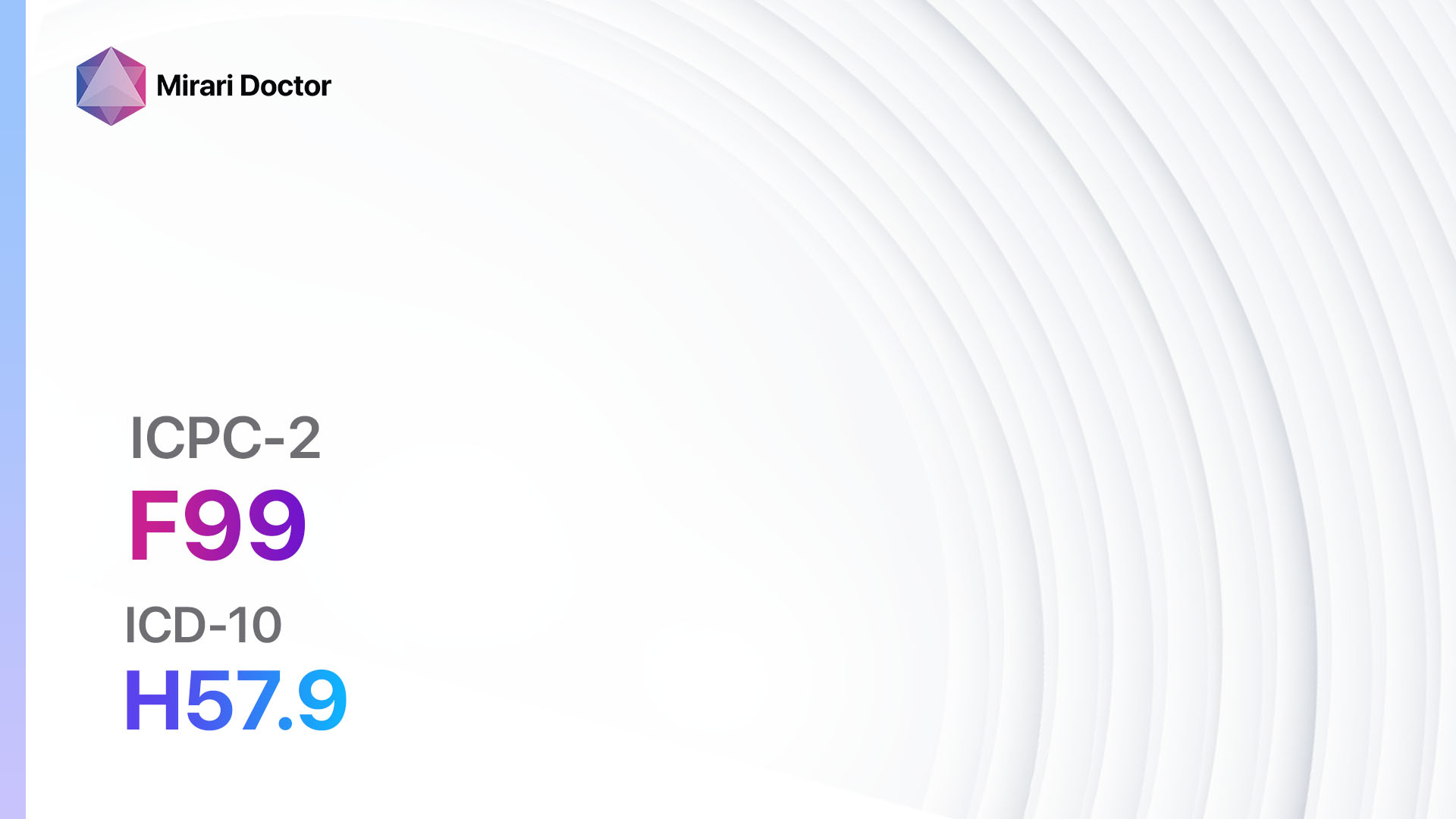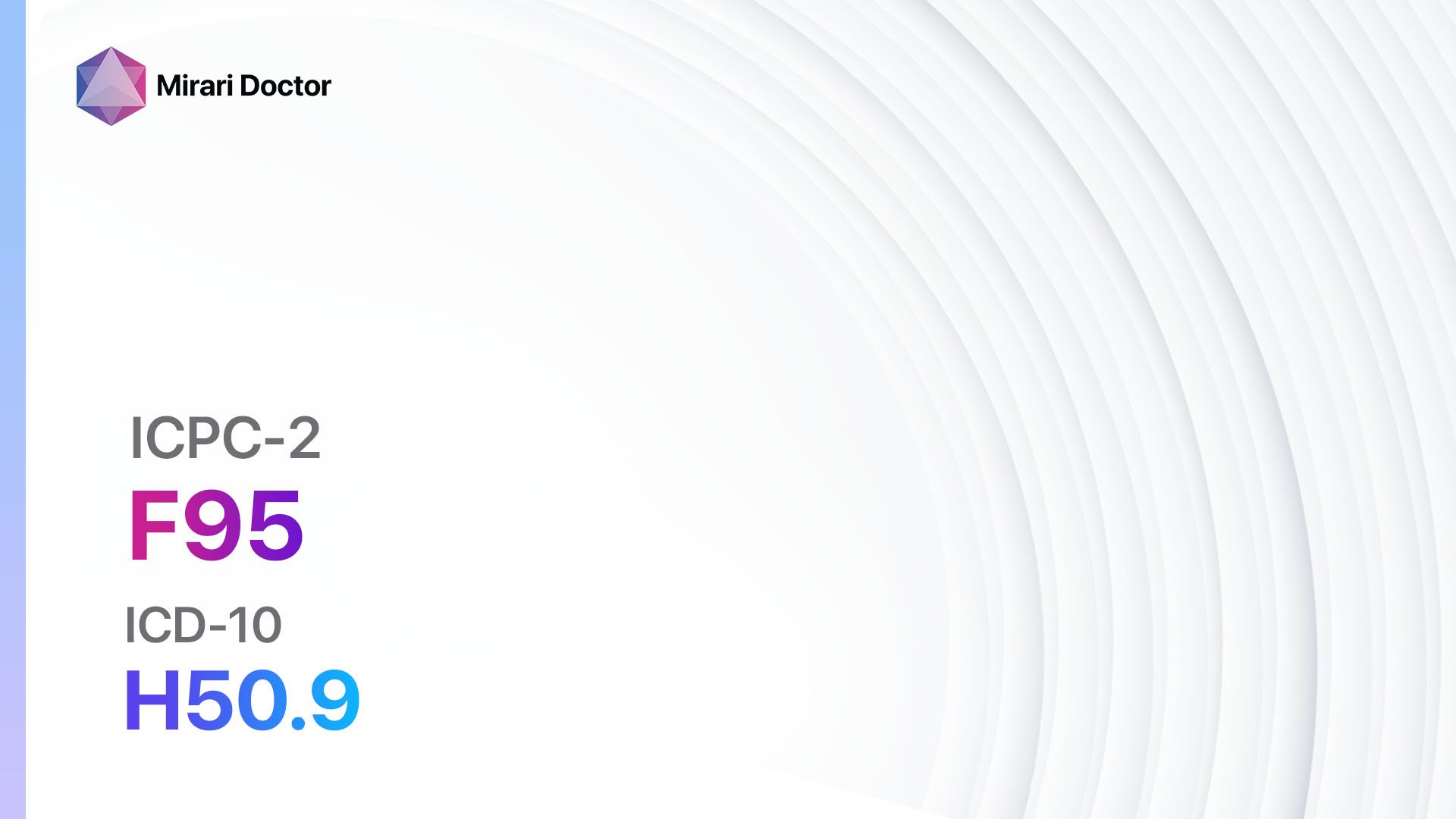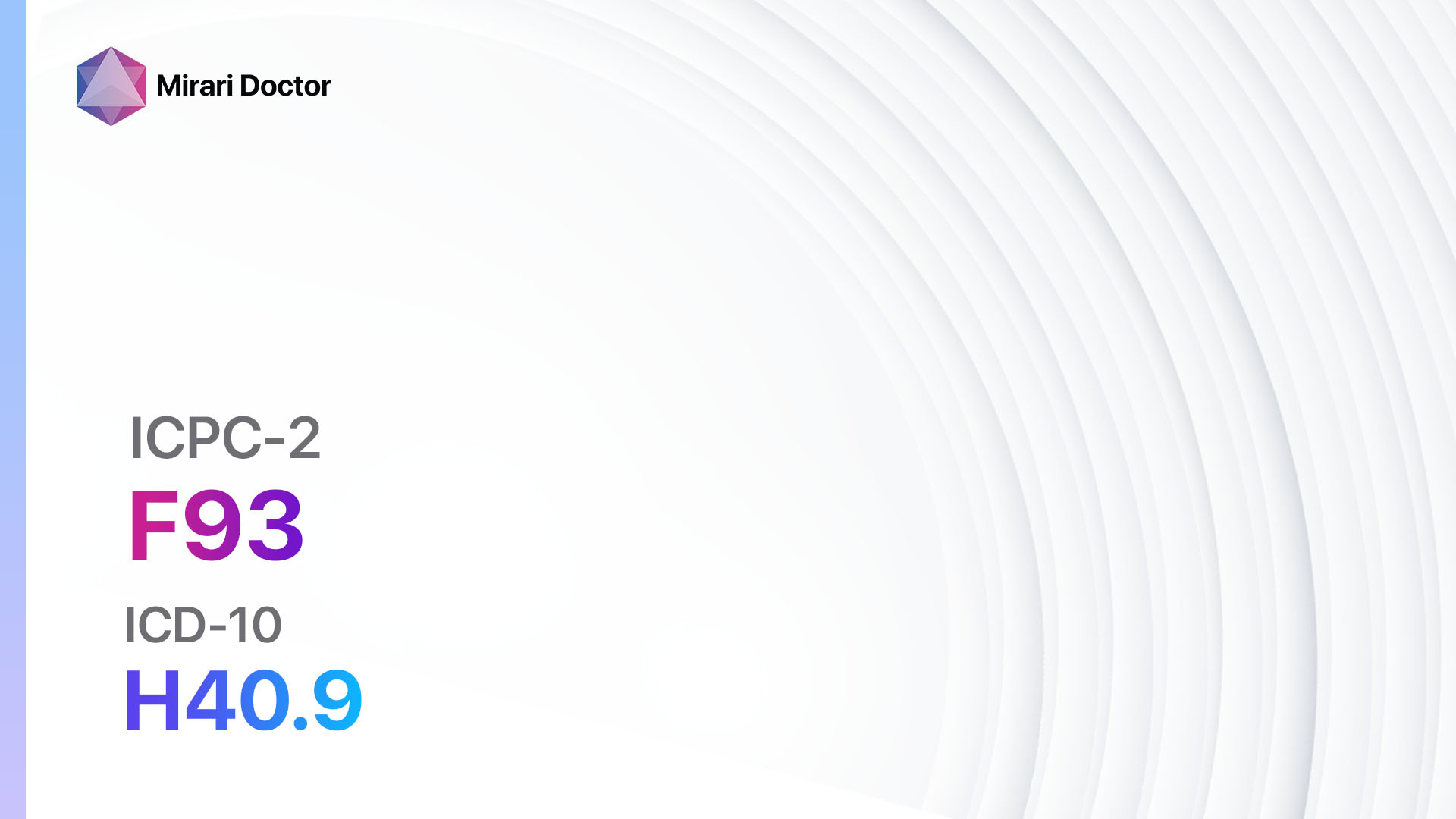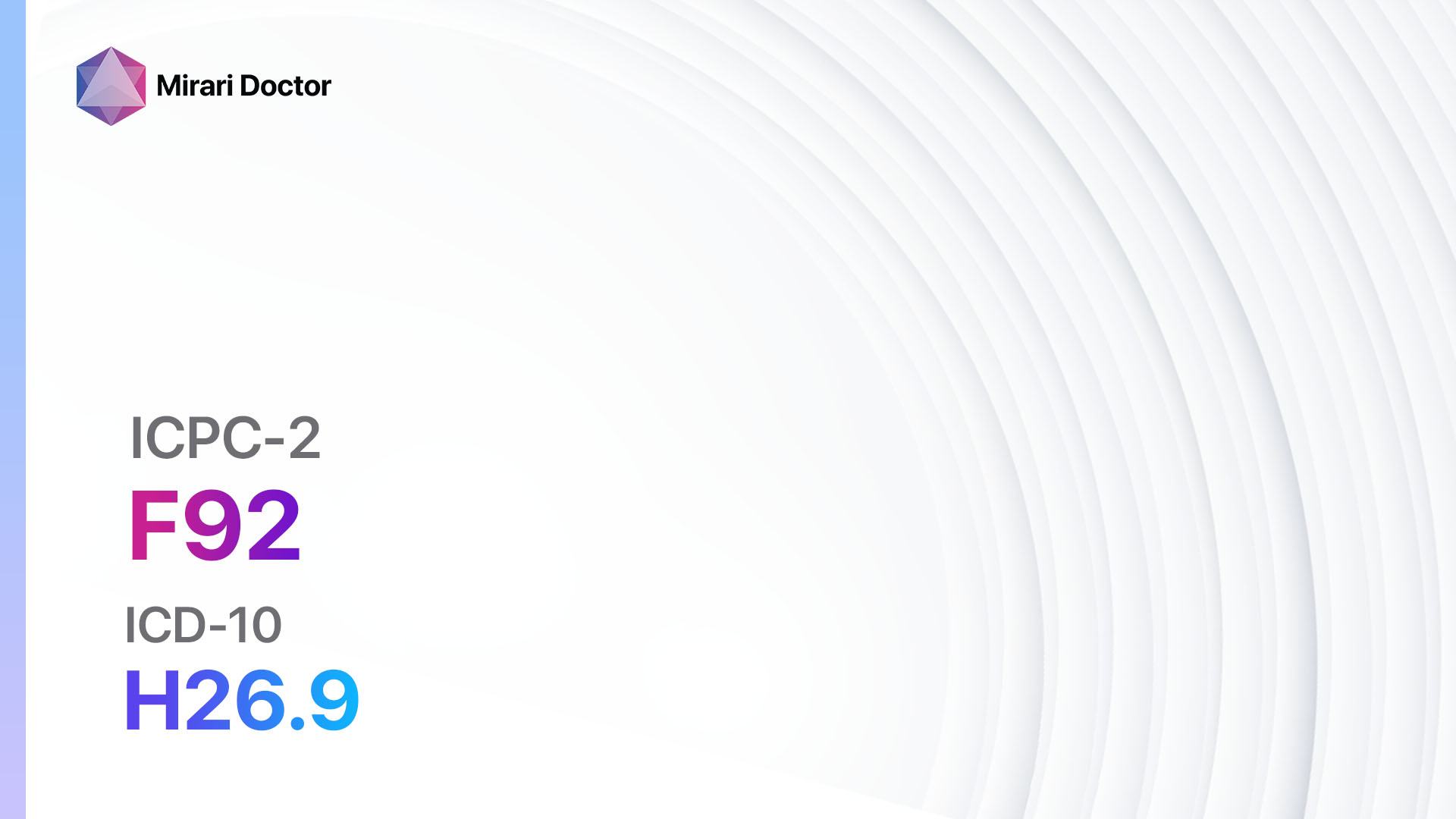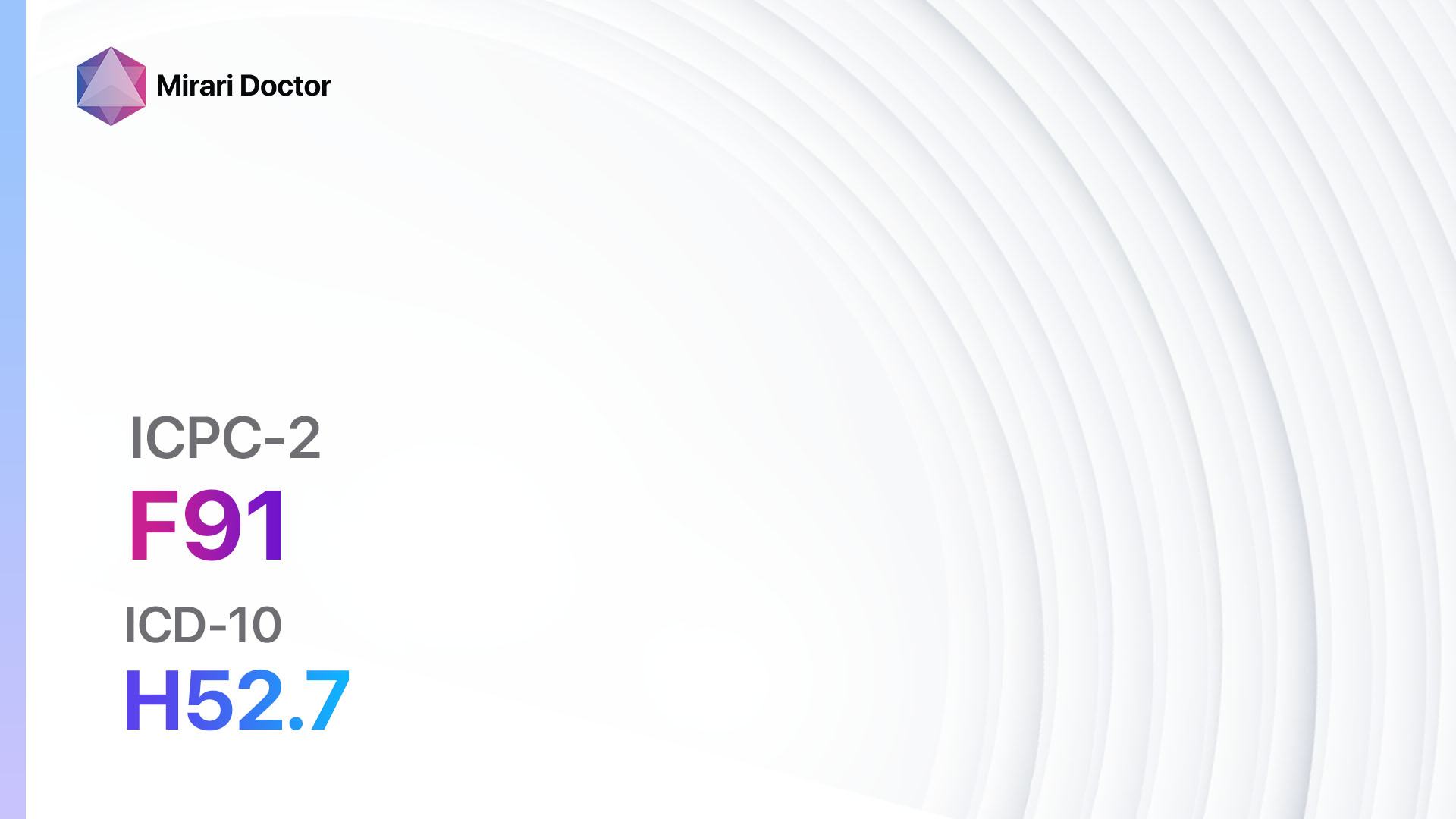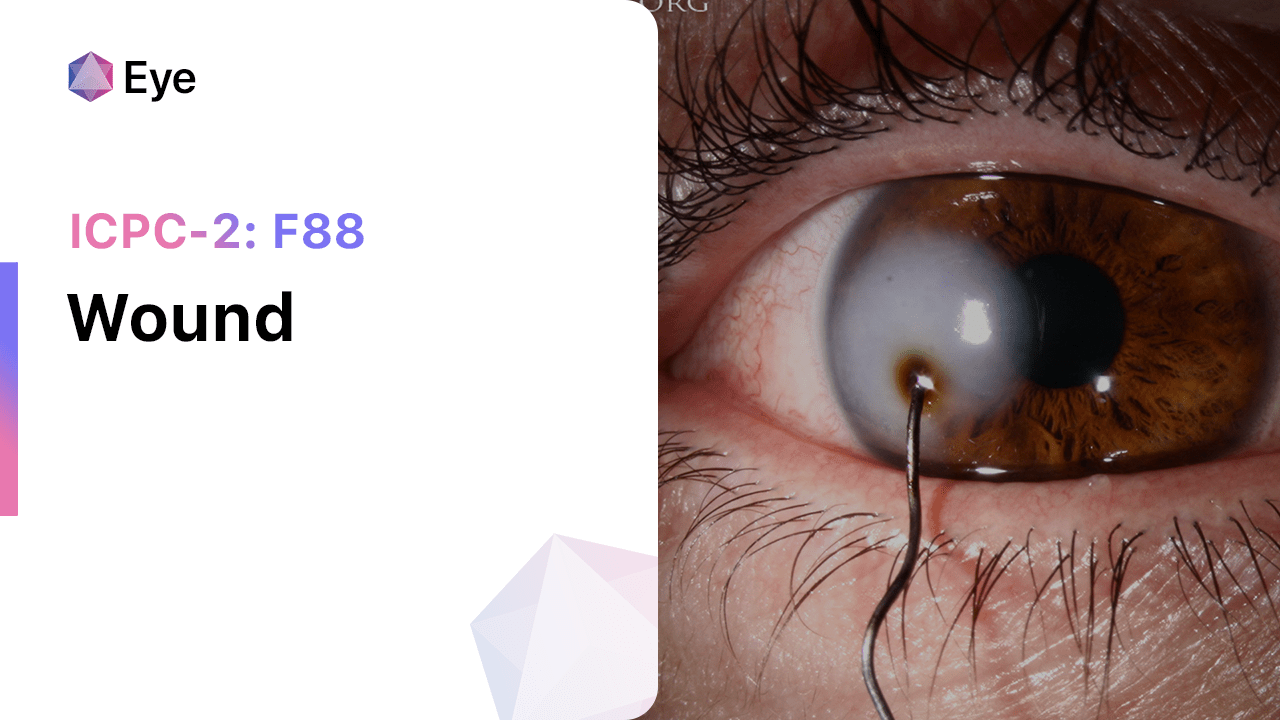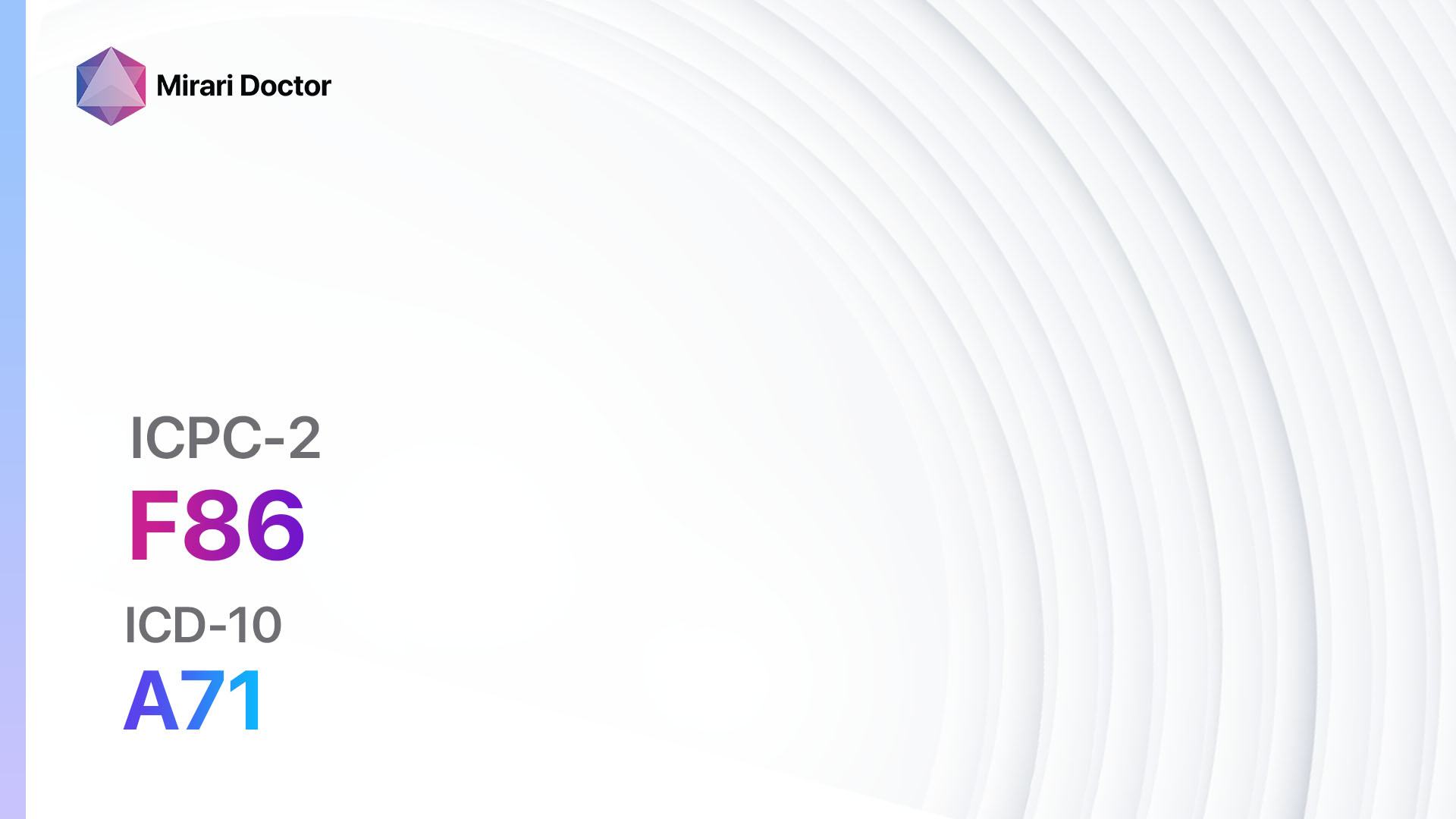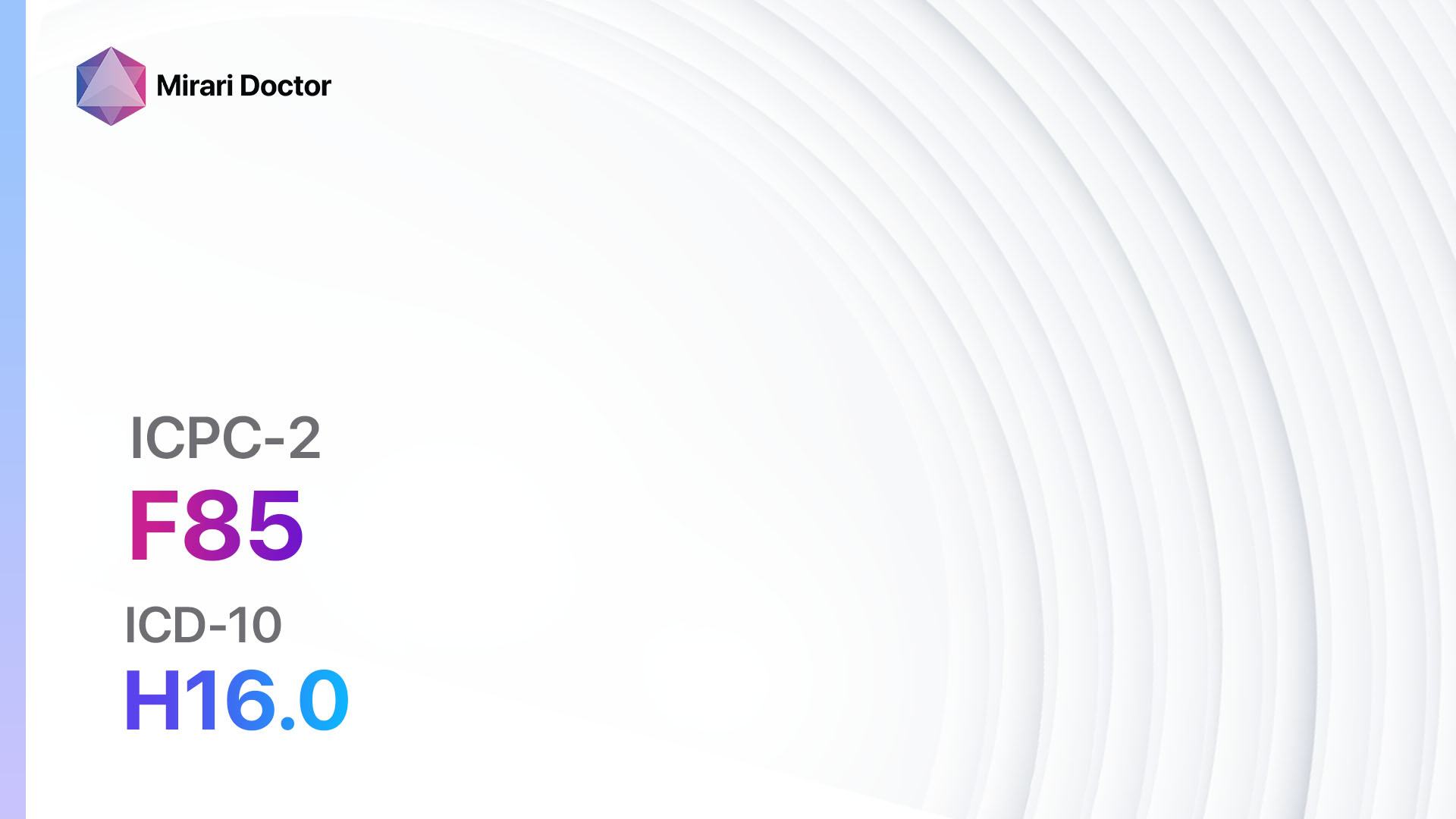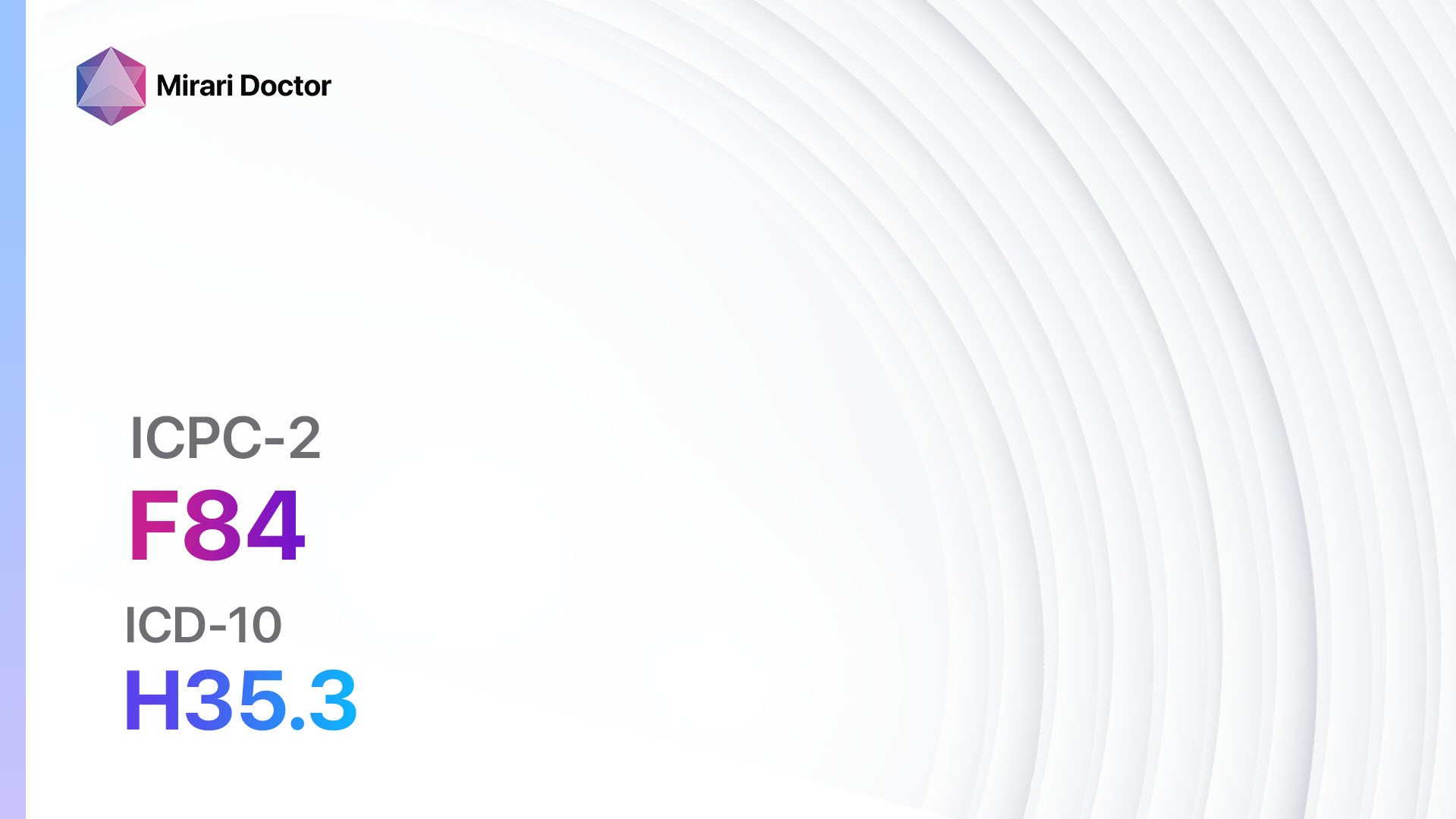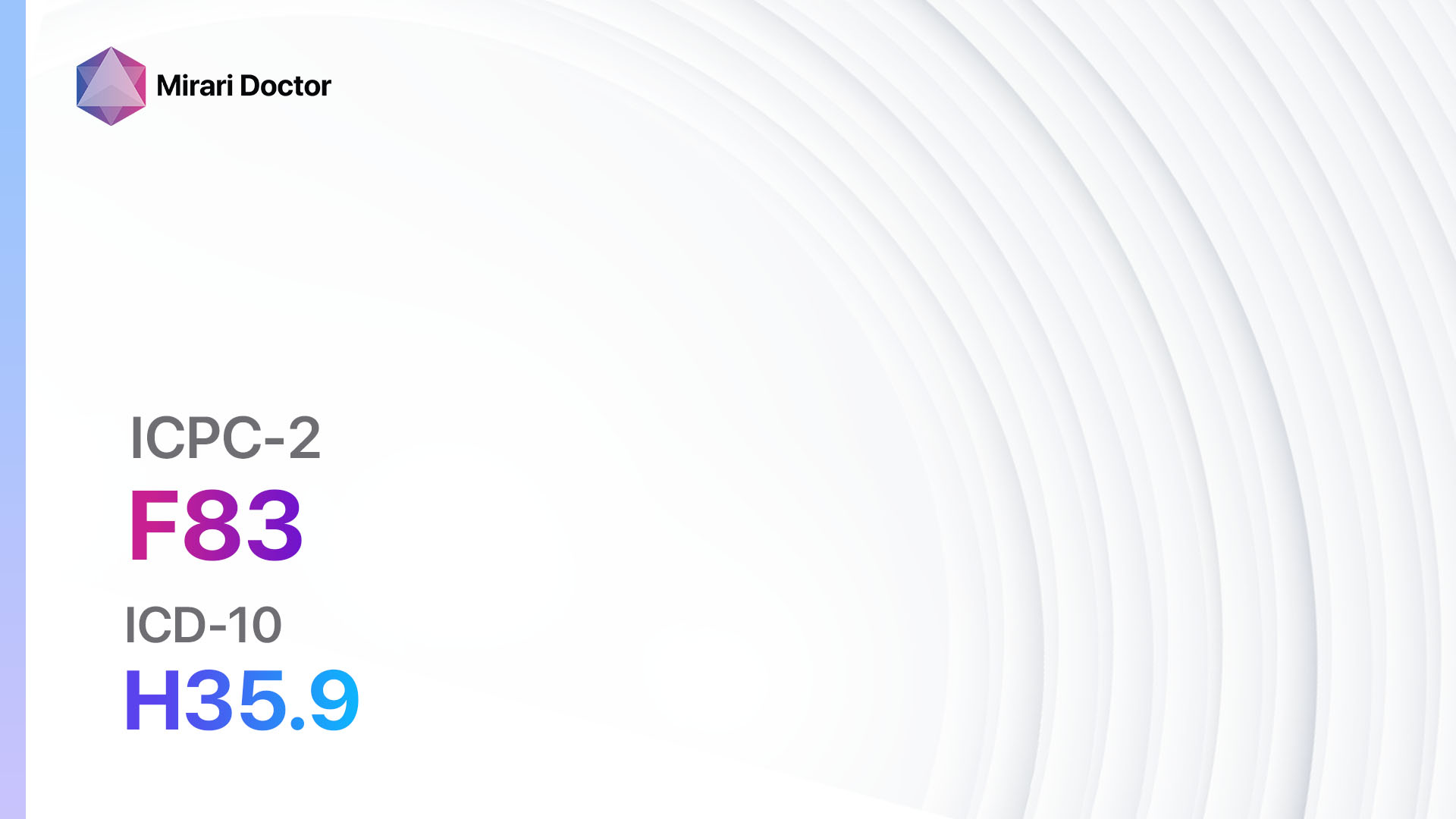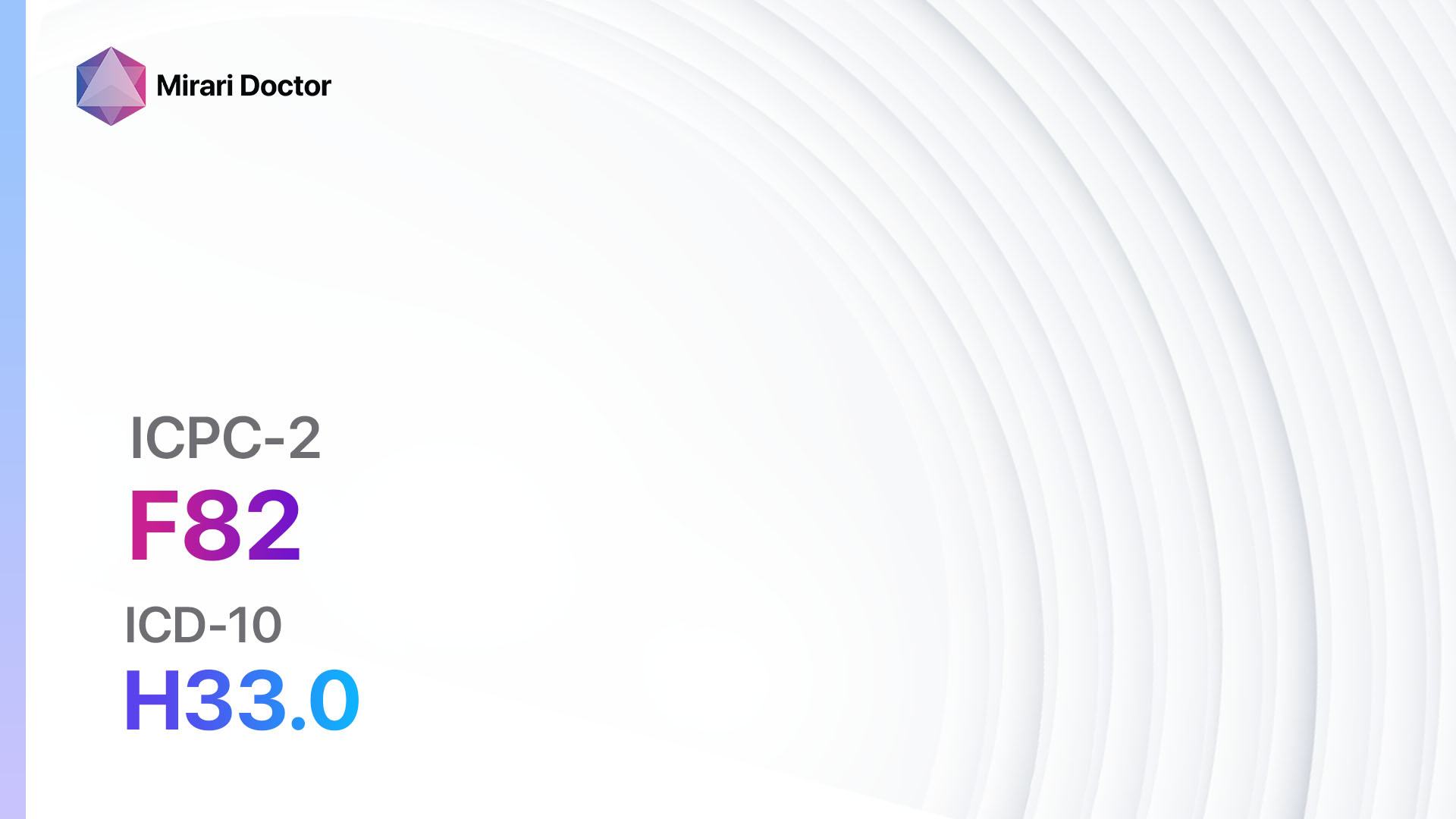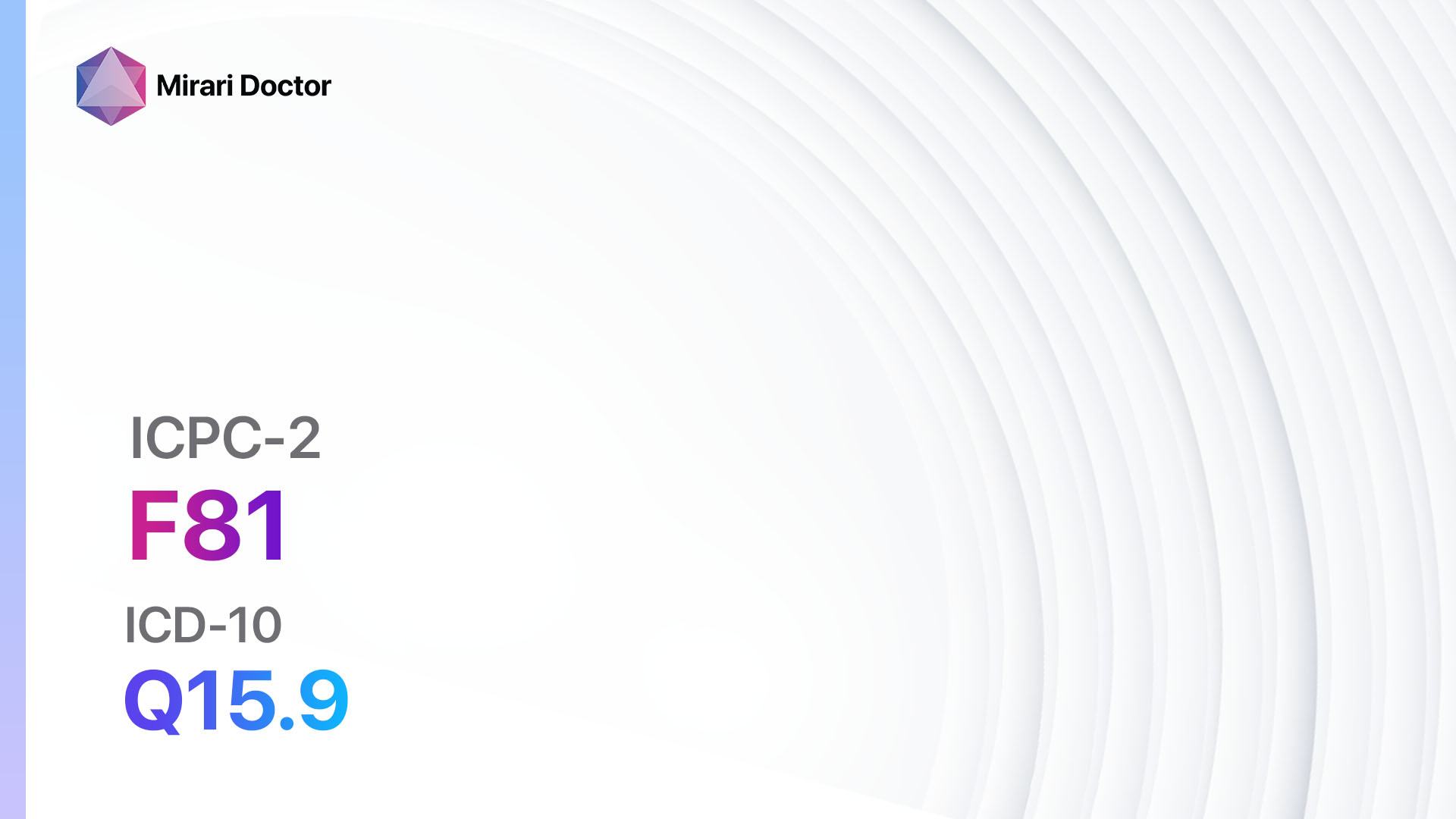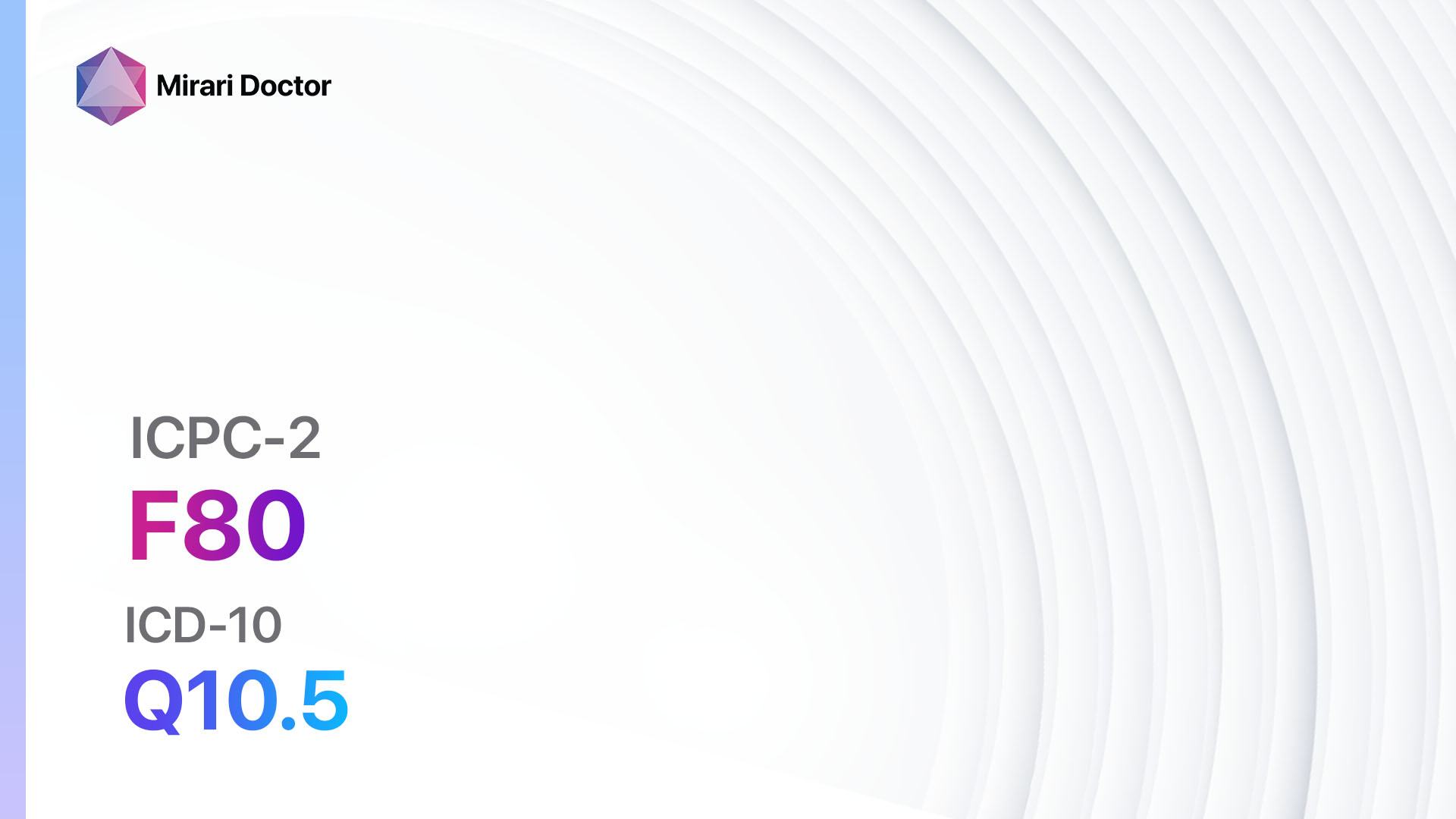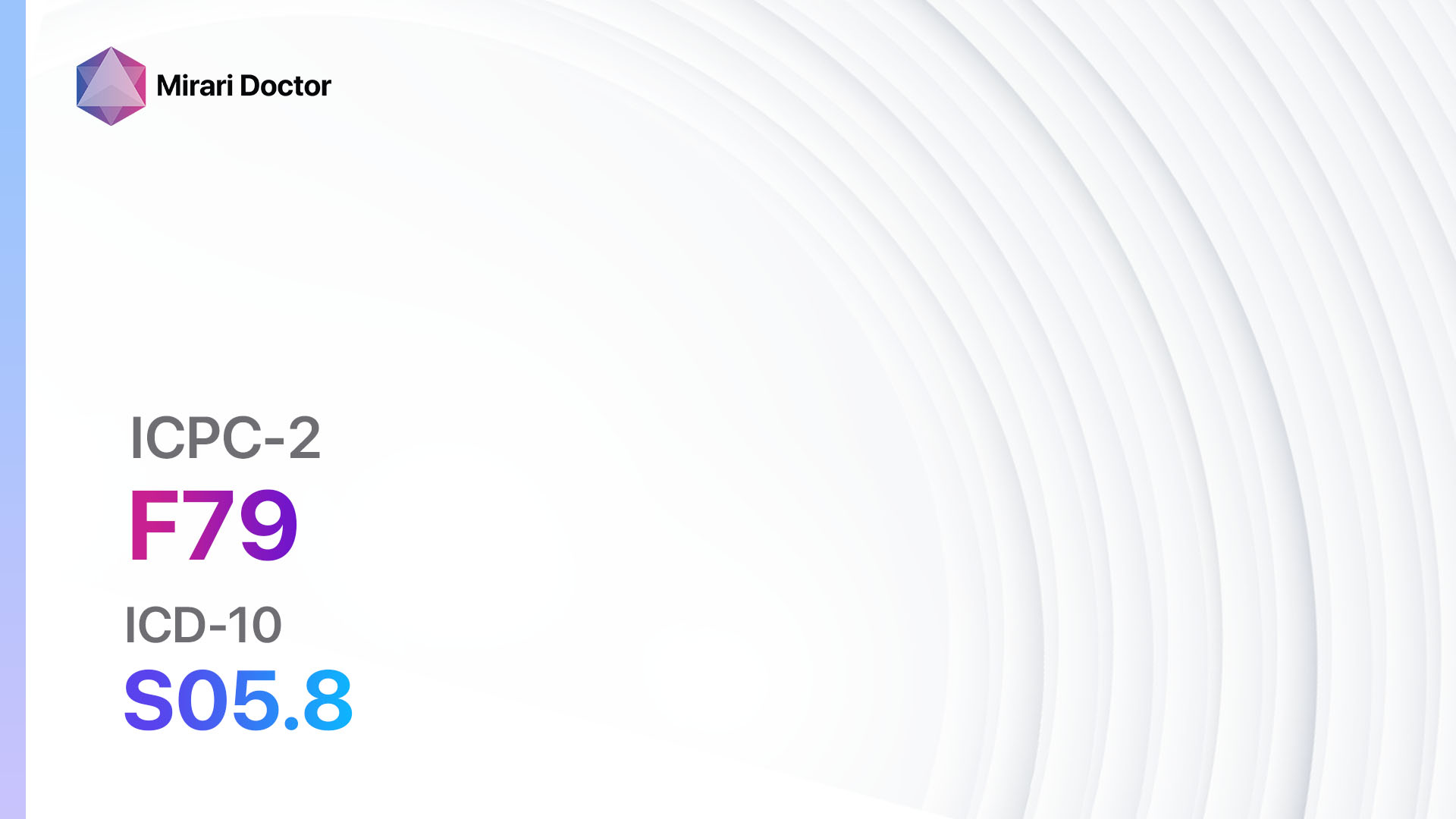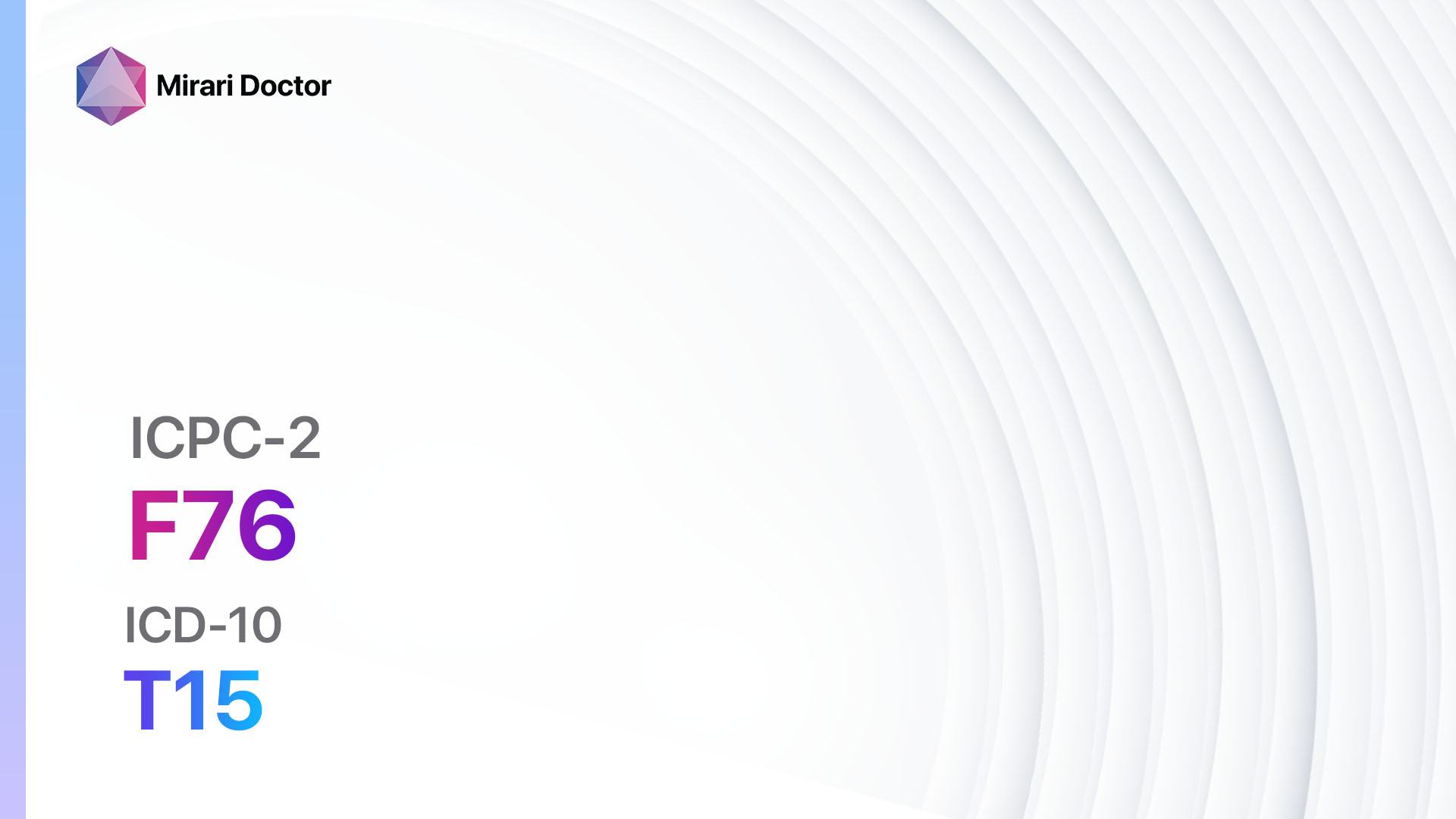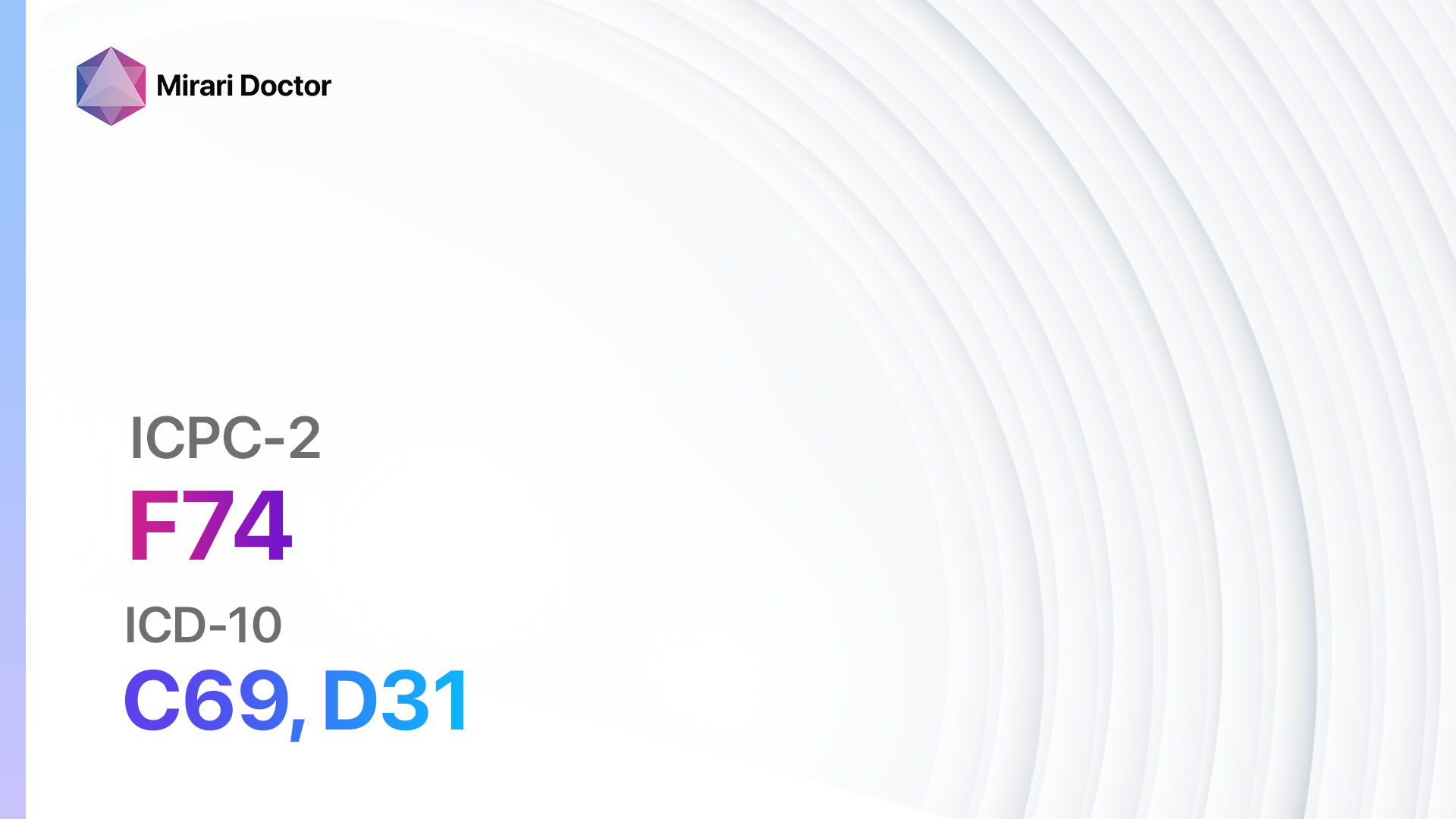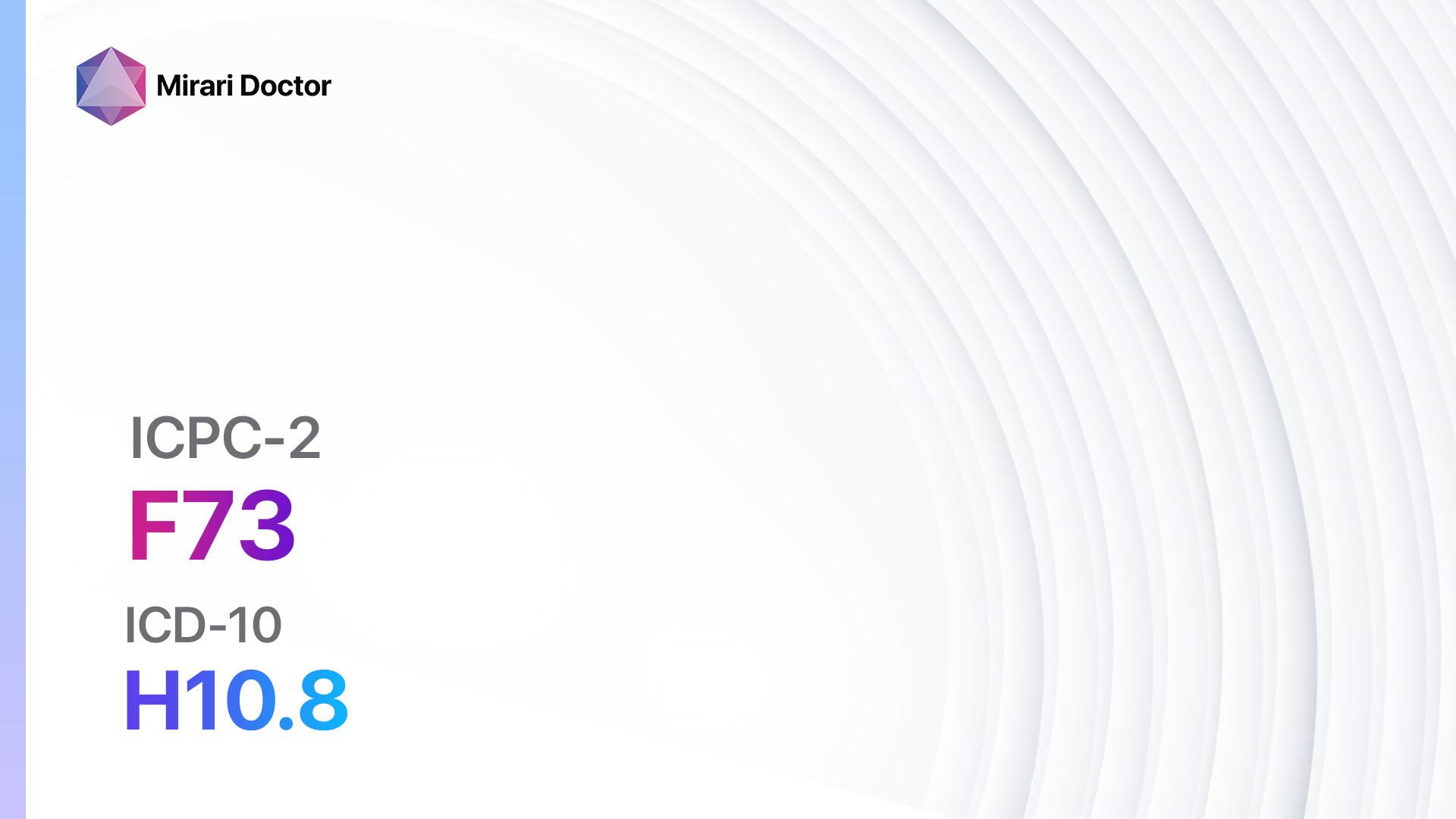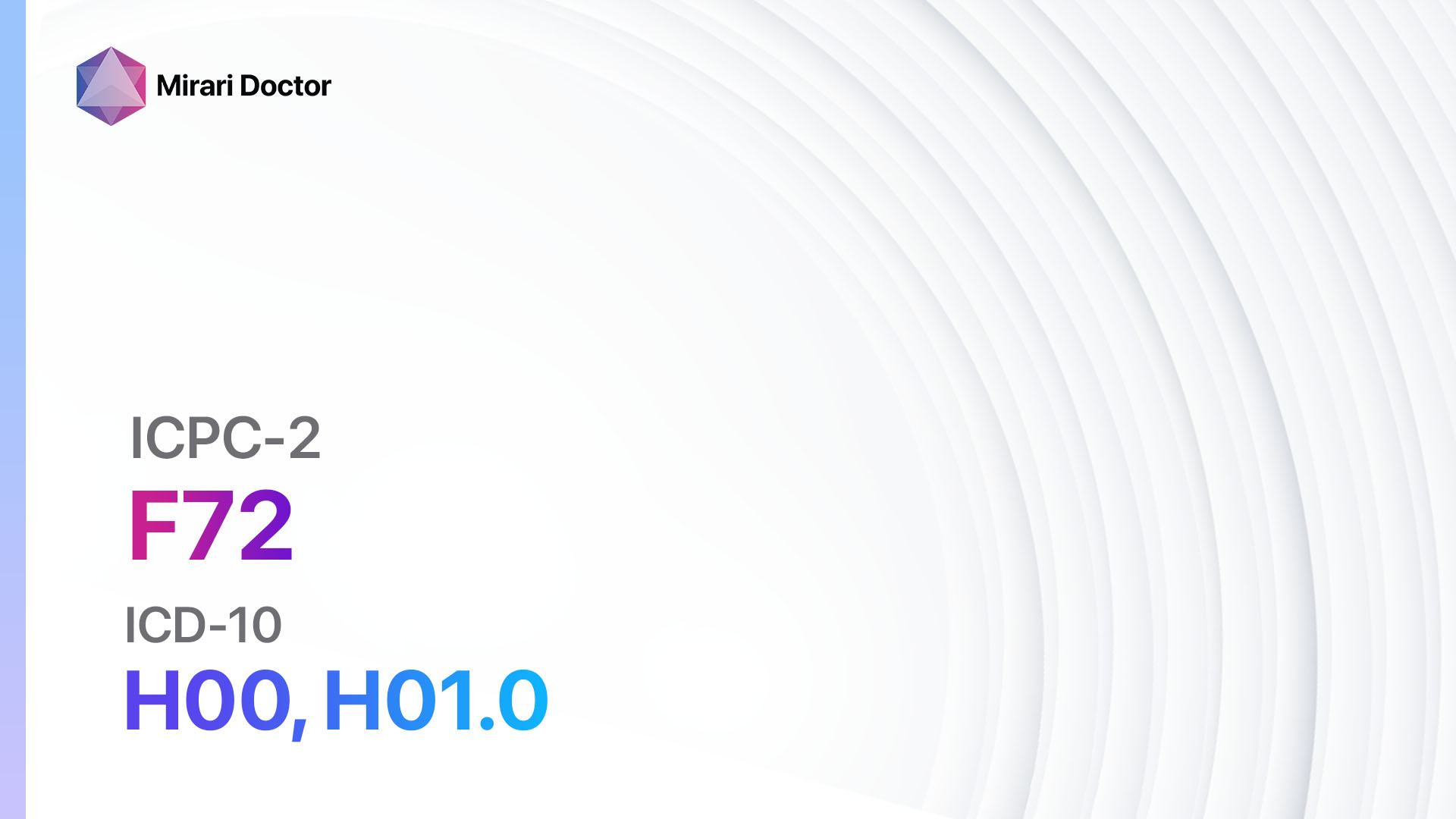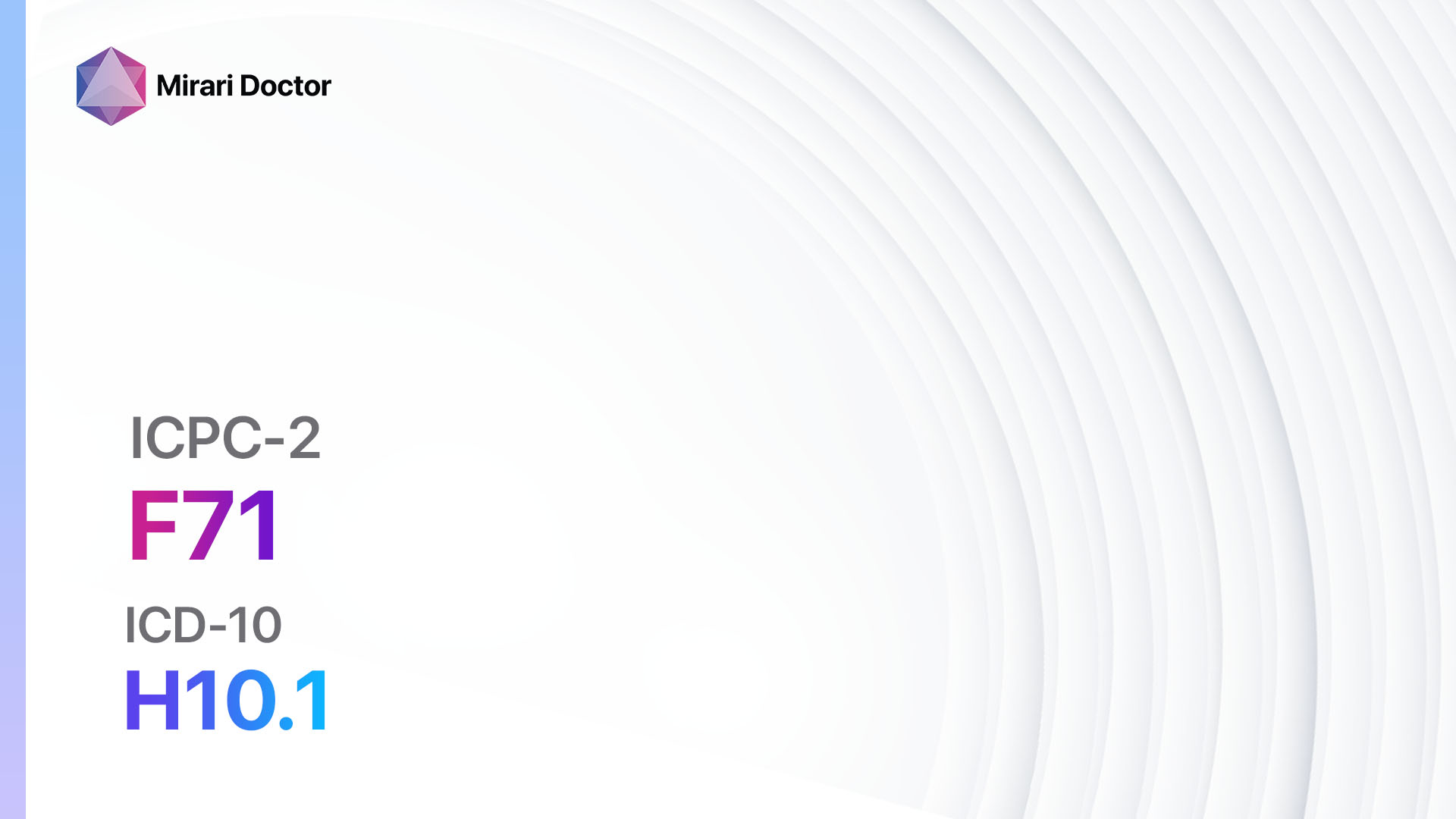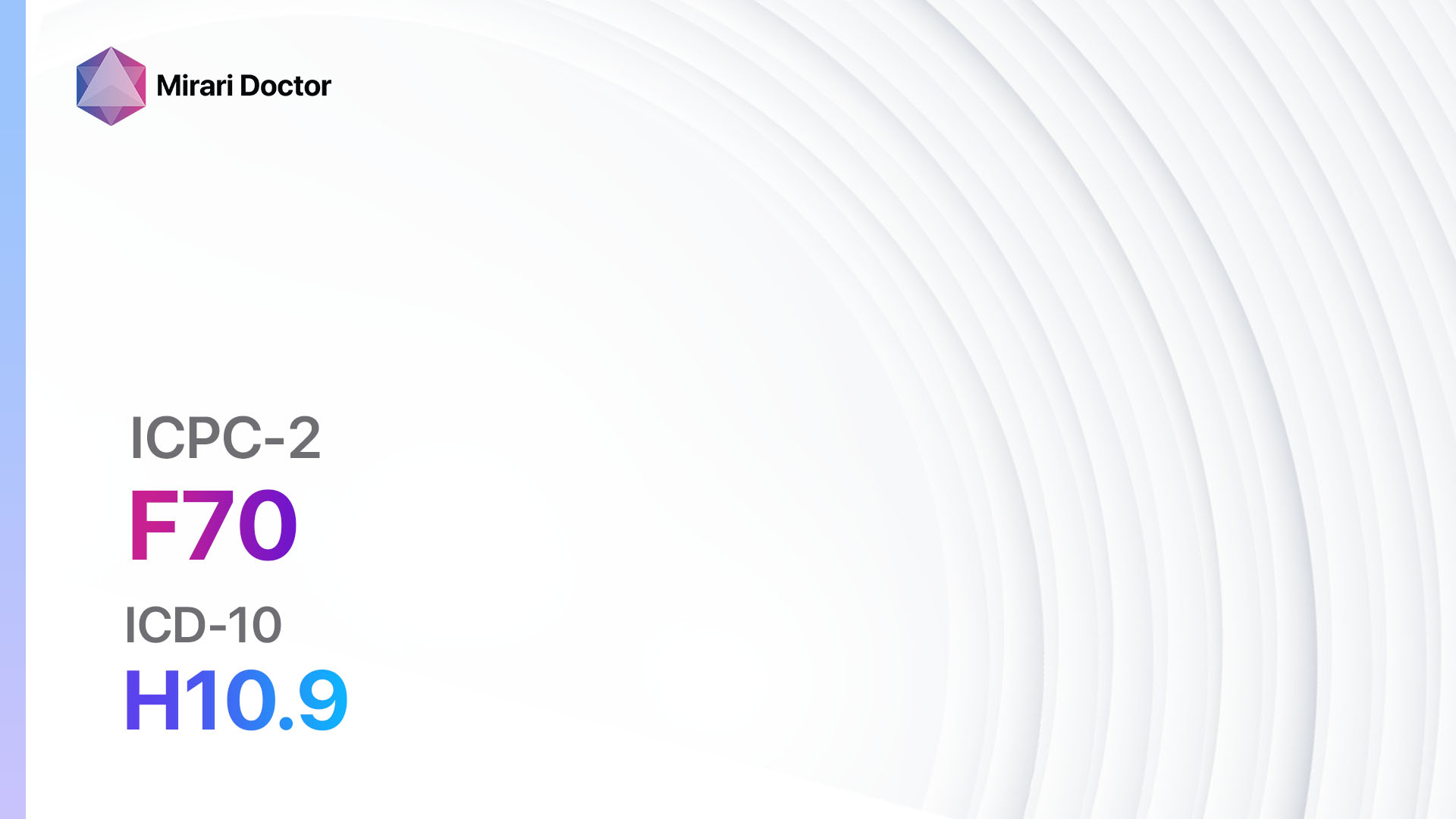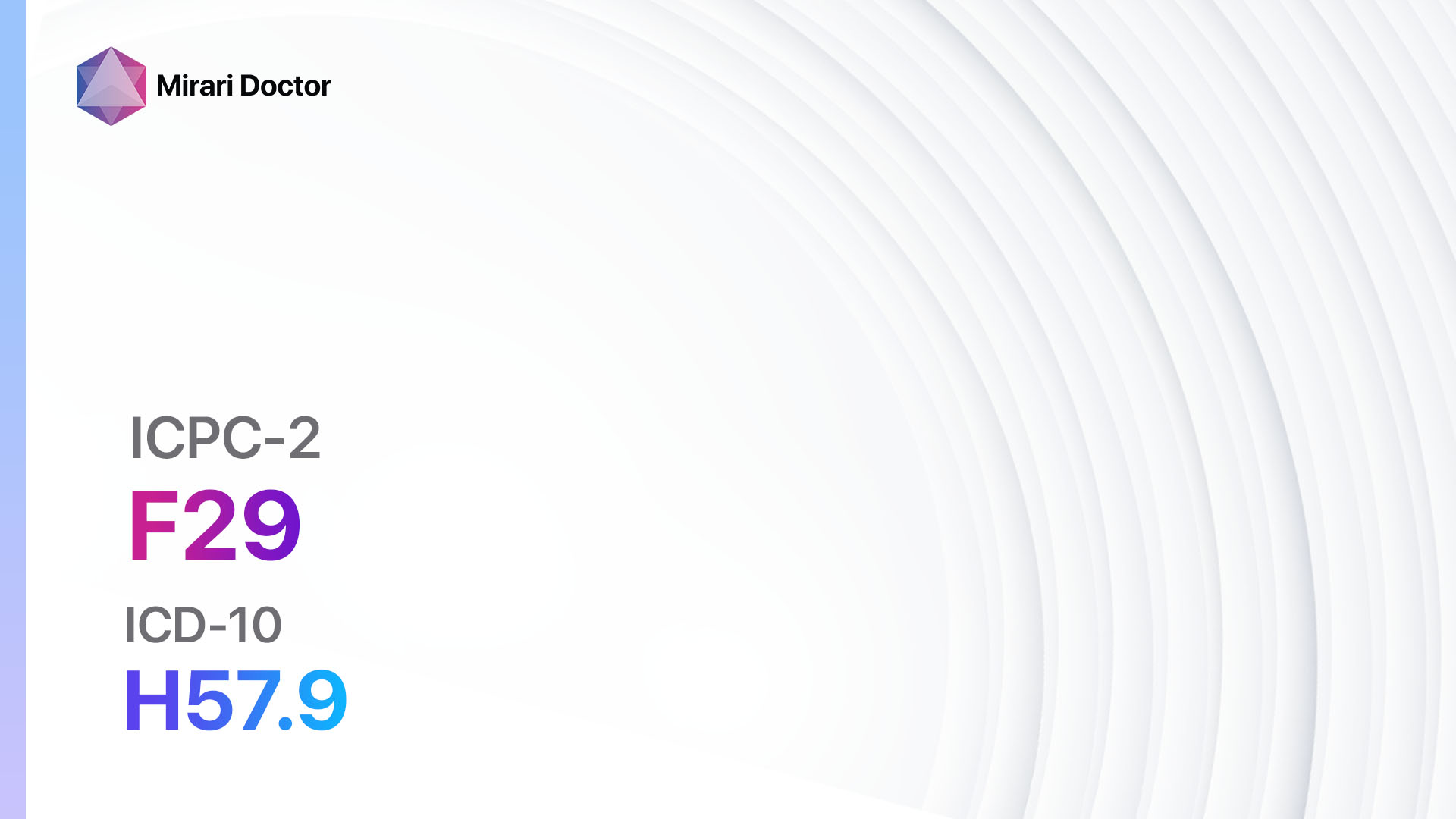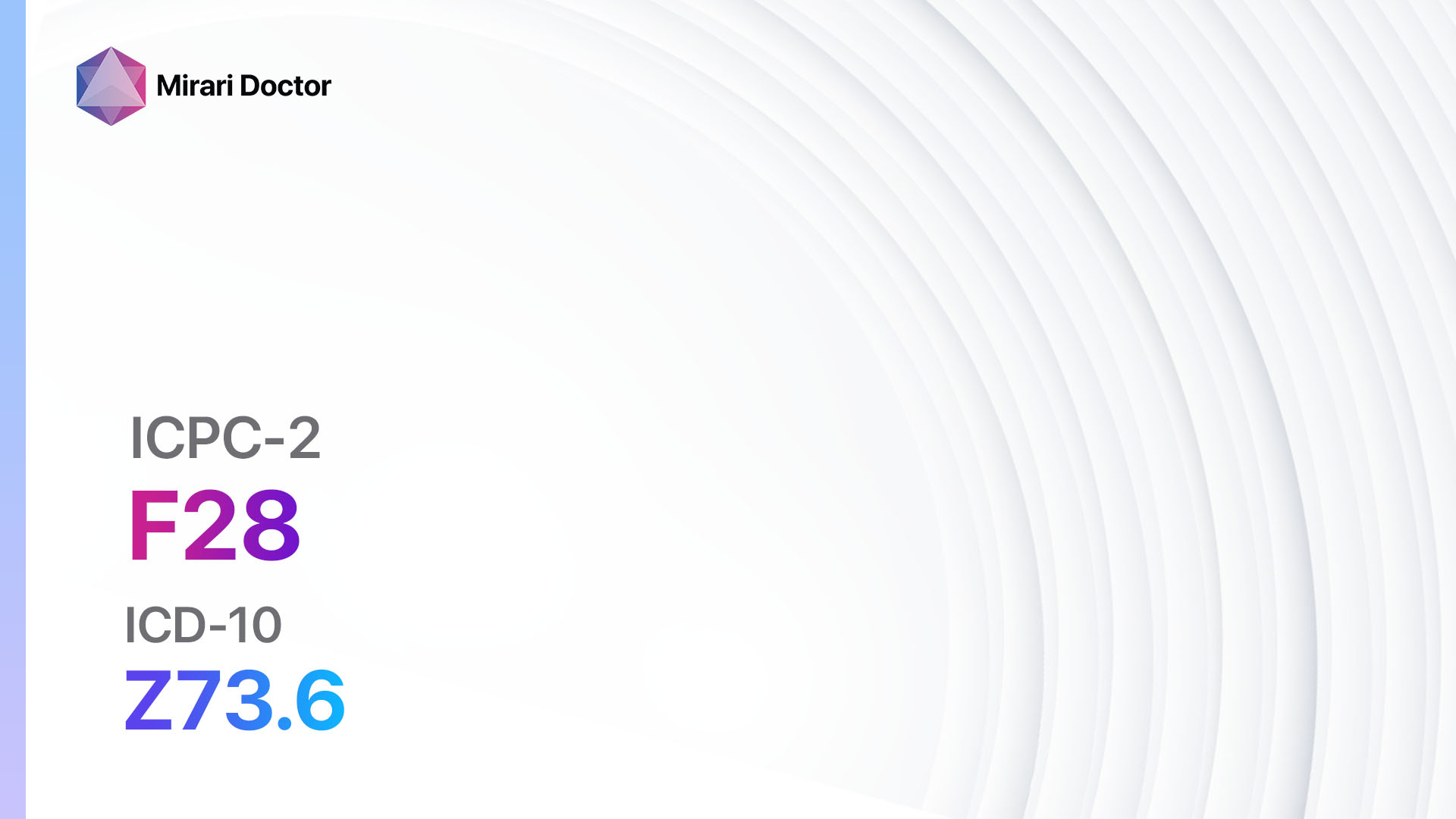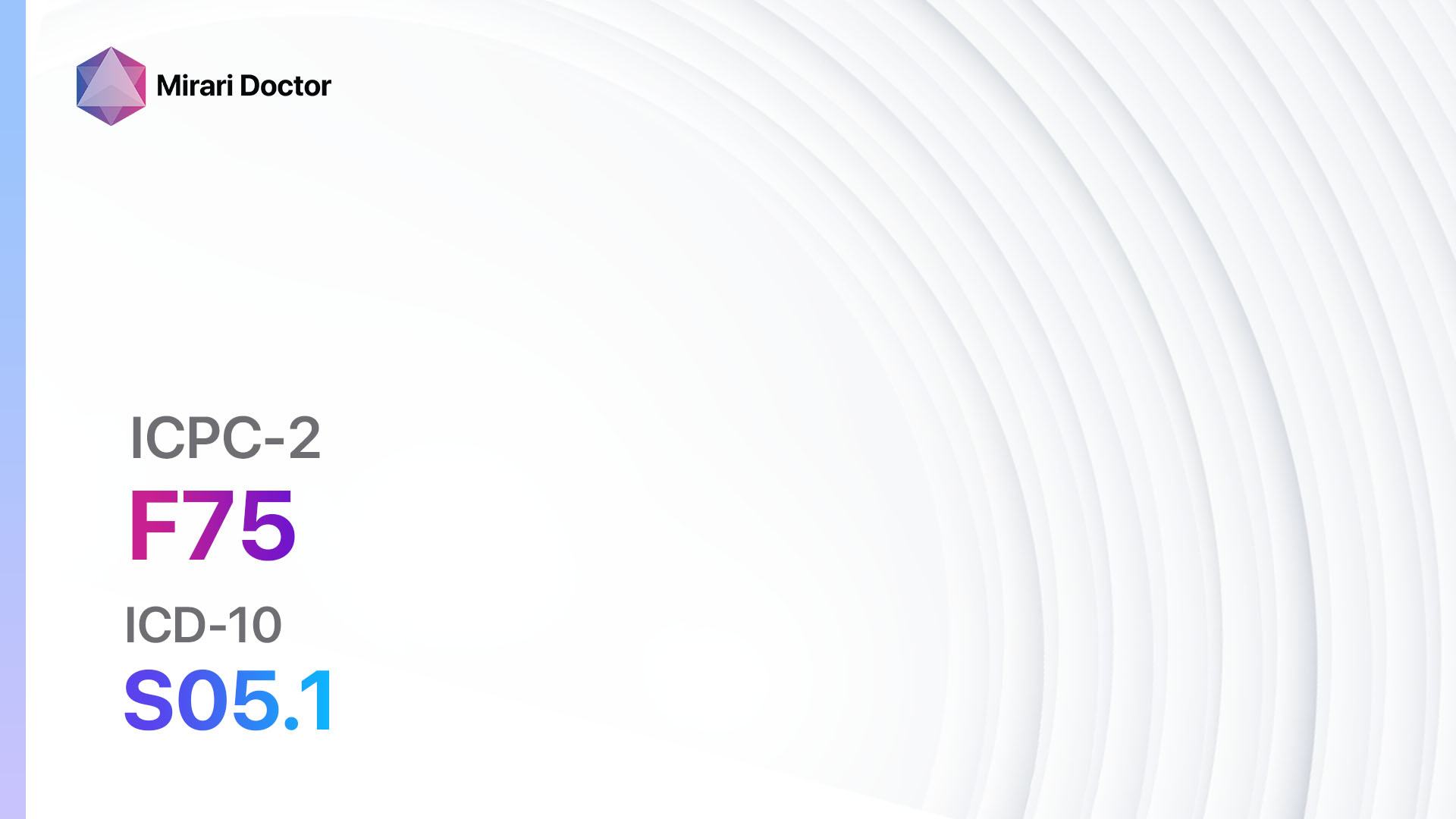
Introduction
Contusion/haemorrhage of the eye refers to the injury or trauma to the eye that results in bleeding or bruising of the eye tissues. It can occur due to direct impact or injury to the eye, such as from a blunt object or a forceful blow.[1][2] This guide aims to provide an overview of the symptoms, causes, diagnostic steps, possible interventions, and patient education for contusion/haemorrhage eye.
Codes
- ICPC-2 Code: F75 Contusion/haemorrhage eye[3]
- ICD-10 Code: S05.1 Contusion of eyeball and orbital tissues[4]
Symptoms
- Redness of the eye[5]
- Swelling around the eye[6]
- Pain or discomfort in the eye[7]
- Blurred or decreased vision[8]
- Sensitivity to light[9]
Causes
- Direct impact or injury to the eye[1]
- Accidental trauma, such as from a fall or sports-related injury[10]
- Physical assault or violence
- Eye surgery or medical procedures
Diagnostic Steps
Medical History
- Gather information about the patient’s recent eye injury or trauma
- Ask about any previous eye conditions or surgeries
- Inquire about any underlying medical conditions or medications that may affect eye health
- Assess for risk factors, such as participation in contact sports or occupation-related risks
Physical Examination
- Inspect the affected eye for signs of redness, swelling, or bruising
- Assess visual acuity and perform a visual field test
- Evaluate eye movements and coordination
- Examine the surrounding structures, such as eyelids and conjunctiva
Laboratory Tests
- Complete blood count (CBC) to assess for any underlying bleeding disorders
- Coagulation profile, including prothrombin time (PT) and activated partial thromboplastin time (aPTT), to evaluate blood clotting function
- Blood chemistry tests to assess overall health status and rule out any systemic conditions contributing to eye bleeding
Diagnostic Imaging
- Orbital X-ray to evaluate for any fractures or bony abnormalities
- Ultrasound of the eye to assess for any internal bleeding or damage to the eye structures
- CT scan or MRI of the head and orbit to obtain detailed images of the eye and surrounding structures
Other Tests
- Slit-lamp examination to evaluate the anterior segment of the eye, including the cornea, iris, and lens
- Tonometry to measure intraocular pressure and assess for any glaucoma-related complications
- Fluorescein angiography to evaluate blood flow in the retina and identify any abnormalities
Follow-up and Patient Education
- Schedule follow-up appointments to monitor the progress of the eye contusion/haemorrhage
- Educate the patient about the importance of protecting the injured eye from further trauma or injury
- Provide instructions for proper eye care, including the use of prescribed medications and eye drops
- Discuss potential complications and when to seek immediate medical attention
Possible Interventions
Traditional Interventions
Medications:
Top 5 drugs for Contusion/Haemorrhage Eye:
- Artificial tears:
- Cost: $5-$10 per bottle.
- Contraindications: Hypersensitivity to the ingredients.
- Side effects: Temporary blurred vision, eye irritation.
- Severe side effects: Allergic reactions.
- Drug interactions: None.
- Warning: Use as directed and avoid contamination of the bottle.
- Topical corticosteroids (e.g., Prednisolone acetate):
- Cost: $10-$50 per bottle.
- Contraindications: Active viral or fungal eye infections.
- Side effects: Increased intraocular pressure, cataract formation.
- Severe side effects: Corneal thinning, delayed wound healing.
- Drug interactions: None.
- Warning: Use under the supervision of an ophthalmologist and follow the prescribed dosage and duration.
- Oral analgesics (e.g., Acetaminophen, Ibuprofen):
- Cost: $5-$15 per bottle.
- Contraindications: Allergy to the medication, active gastrointestinal bleeding.
- Side effects: Upset stomach, dizziness.
- Severe side effects: Liver or kidney damage, gastrointestinal bleeding.
- Drug interactions: Warfarin, other nonsteroidal anti-inflammatory drugs (NSAIDs).
- Warning: Follow the recommended dosage and avoid exceeding the maximum daily dose.
- Topical antibiotics (e.g., Neomycin, Polymyxin B):
- Cost: $5-$20 per tube.
- Contraindications: Hypersensitivity to the ingredients.
- Side effects: Localized skin irritation, allergic reactions.
- Severe side effects: None reported.
- Drug interactions: None.
- Warning: Use as directed and avoid contact with the eyes.
- Oral vitamin C:
- Cost: $5-$15 per bottle.
- Contraindications: Allergy to the medication.
- Side effects: Upset stomach, diarrhea.
- Severe side effects: None reported.
- Drug interactions: None.
- Warning: Follow the recommended dosage and consult a healthcare professional for long-term use.
Alternative Drugs:
- Topical antihistamines (e.g., Ketotifen): Used for allergic conjunctivitis.
- Topical vasoconstrictors (e.g., Naphazoline): Used to reduce eye redness.
- Topical nonsteroidal anti-inflammatory drugs (NSAIDs) (e.g., Ketorolac): Used for pain relief and inflammation.
Surgical Procedures:
- Surgical intervention is not typically required for contusion/haemorrhage eye. However, in severe cases or when complications arise, the following procedures may be considered:
- Vitreoretinal surgery: Used to repair retinal detachment or remove vitreous hemorrhage.
- Orbital decompression surgery: Performed to relieve pressure on the eye in cases of orbital hemorrhage or swelling.
- Eyelid surgery: May be necessary to repair eyelid lacerations or correct eyelid malposition.
Alternative Interventions
- Cold compress: Applying a cold compress to the affected eye can help reduce swelling and pain. Cost: Free.
- Eye patching: Placing an eye patch over the injured eye can protect it from further trauma and promote healing. Cost: $5-$10 per pack.
- Eye exercises: Performing specific eye exercises can help improve eye muscle strength and coordination. Cost: Free.
- Homeopathic remedies: Some homeopathic remedies, such as Arnica montana, may help reduce bruising and inflammation. Cost: Varies depending on the specific remedy.
- Acupuncture: May help reduce pain and promote healing. Cost: $60-$120 per session.
Lifestyle Interventions
- Rest and relaxation: Adequate rest and relaxation can promote healing and reduce eye strain. Cost: Free.
- Eye protection: Wearing protective eyewear, such as safety goggles, can prevent eye injuries. Cost: $10-$50 per pair.
- Healthy diet: Consuming a balanced diet rich in vitamins and minerals can support overall eye health. Cost: Varies depending on food choices.
- Avoiding smoking and alcohol: Smoking and excessive alcohol consumption can negatively impact eye health. Cost: Free.
- Stress management: Managing stress levels can help prevent eye strain and promote overall well-being. Cost: Varies depending on chosen stress management techniques.
It is important to note that the cost ranges provided are approximate and may vary depending on the location and availability of the interventions.
Mirari Cold Plasma Alternative Intervention
Understanding Mirari Cold Plasma
- Safe and Non-Invasive Treatment: Mirari Cold Plasma is a safe and non-invasive treatment option for various skin conditions. It does not require incisions, minimizing the risk of scarring, bleeding, or tissue damage.
- Efficient Extraction of Foreign Bodies: Mirari Cold Plasma facilitates the removal of foreign bodies from the skin by degrading and dissociating organic matter, allowing easier access and extraction.
- Pain Reduction and Comfort: Mirari Cold Plasma has a local analgesic effect, providing pain relief during the treatment, making it more comfortable for the patient.
- Reduced Risk of Infection: Mirari Cold Plasma has antimicrobial properties, effectively killing bacteria and reducing the risk of infection.
- Accelerated Healing and Minimal Scarring: Mirari Cold Plasma stimulates wound healing and tissue regeneration, reducing healing time and minimizing the formation of scars.
Mirari Cold Plasma Prescription
Video instructions for using Mirari Cold Plasma Device – F75 Contusion/haemorrhage eye (ICD-10:S05.1)
| Mild | Moderate | Severe |
| Mode setting: 1 (Infection) Location: 7 (Neuro system & ENT) Morning: 15 minutes, Evening: 15 minutes |
Mode setting: 1 (Infection) Location: 7 (Neuro system & ENT) Morning: 30 minutes, Lunch: 30 minutes, Evening: 30 minutes |
Mode setting: 1 (Infection) Location: 7 (Neuro system & ENT) Morning: 30 minutes, Lunch: 30 minutes, Evening: 30 minutes |
| Mode setting: 2 (Wound Healing) Location: 7 (Neuro system & ENT) Morning: 15 minutes, Evening: 15 minutes |
Mode setting: 2 (Wound Healing) Location: 7 (Neuro system & ENT) Morning: 30 minutes, Lunch: 30 minutes, Evening: 30 minutes |
Mode setting: 2 (Wound Healing) Location: 7 (Neuro system & ENT) Morning: 30 minutes, Lunch: 30 minutes, Evening: 30 minutes |
| Mode setting: 3 (Antiviral Therapy) Location: 7 (Neuro system & ENT) Morning: 15 minutes, Evening: 15 minutes |
Mode setting: 3 (Antiviral Therapy) Location: 7 (Neuro system & ENT) Morning: 30 minutes, Lunch: 30 minutes, Evening: 30 minutes |
Mode setting: 3 (Antiviral Therapy) Location: 7 (Neuro system & ENT) Morning: 30 minutes, Lunch: 30 minutes, Evening: 30 minutes |
| Total Morning: 45 minutes approx. $7.50 USD, Evening: 45 minutes approx. $7.50 USD |
Total Morning: 90 minutes approx. $15 USD, Lunch: 90 minutes approx. $15 USD, Evening: 90 minutes approx. $15 USD, |
Total Morning: 90 minutes approx. $15 USD, Lunch: 90 minutes approx. $15 USD, Evening: 90 minutes approx. $15 USD, |
| Usual treatment for 7-60 days approx. $105 USD – $900 USD | Usual treatment for 6-8 weeks approx. $1,890 USD – $2,520 USD |
Usual treatment for 3-6 months approx. $4,050 USD – $8,100 USD
|
 |
|
Use the Mirari Cold Plasma device to treat Contusion/haemorrhage eye effectively.
WARNING: MIRARI COLD PLASMA IS DESIGNED FOR THE HUMAN BODY WITHOUT ANY ARTIFICIAL OR THIRD PARTY PRODUCTS. USE OF OTHER PRODUCTS IN COMBINATION WITH MIRARI COLD PLASMA MAY CAUSE UNPREDICTABLE EFFECTS, HARM OR INJURY. PLEASE CONSULT A MEDICAL PROFESSIONAL BEFORE COMBINING ANY OTHER PRODUCTS WITH USE OF MIRARI.
Step 1: Cleanse the Skin
- Start by cleaning the affected area of the skin with a gentle cleanser or mild soap and water. Gently pat the area dry with a clean towel.
Step 2: Prepare the Mirari Cold Plasma device
- Ensure that the Mirari Cold Plasma device is fully charged or has fresh batteries as per the manufacturer’s instructions. Make sure the device is clean and in good working condition.
- Switch on the Mirari device using the power button or by following the specific instructions provided with the device.
- Some Mirari devices may have adjustable settings for intensity or treatment duration. Follow the manufacturer’s instructions to select the appropriate settings based on your needs and the recommended guidelines.
Step 3: Apply the Device
- Place the Mirari device in direct contact with the affected area of the skin. Gently glide or hold the device over the skin surface, ensuring even coverage of the area experiencing.
- Slowly move the Mirari device in a circular motion or follow a specific pattern as indicated in the user manual. This helps ensure thorough treatment coverage.
Step 4: Monitor and Assess:
- Keep track of your progress and evaluate the effectiveness of the Mirari device in managing your Contusion/haemorrhage eye. If you have any concerns or notice any adverse reactions, consult with your health care professional.
Note
This guide is for informational purposes only and should not replace the advice of a medical professional. Always consult with your healthcare provider or a qualified medical professional for personal advice, diagnosis, or treatment. Do not solely rely on the information presented here for decisions about your health. Use of this information is at your own risk. The authors of this guide, nor any associated entities or platforms, are not responsible for any potential adverse effects or outcomes based on the content.
Mirari Cold Plasma System Disclaimer
- Purpose: The Mirari Cold Plasma System is a Class 2 medical device designed for use by trained healthcare professionals. It is registered for use in Thailand and Vietnam. It is not intended for use outside of these locations.
- Informational Use: The content and information provided with the device are for educational and informational purposes only. They are not a substitute for professional medical advice or care.
- Variable Outcomes: While the device is approved for specific uses, individual outcomes can differ. We do not assert or guarantee specific medical outcomes.
- Consultation: Prior to utilizing the device or making decisions based on its content, it is essential to consult with a Certified Mirari Tele-Therapist and your medical healthcare provider regarding specific protocols.
- Liability: By using this device, users are acknowledging and accepting all potential risks. Neither the manufacturer nor the distributor will be held accountable for any adverse reactions, injuries, or damages stemming from its use.
- Geographical Availability: This device has received approval for designated purposes by the Thai and Vietnam FDA. As of now, outside of Thailand and Vietnam, the Mirari Cold Plasma System is not available for purchase or use.
References
- Salmon, J. F. (2019). Kanski’s Clinical Ophthalmology: A Systematic Approach (9th ed.). Elsevier.
- Bagheri, N., Wajda, B., Calvo, C., & Durrani, A. (Eds.). (2016). The wills eye manual (7th ed.). Lippincott Williams and Wilkins.
- RxReasoner. (n.d.). ICPC-2 Code: F75 Contusion/haemorrhage eye. Retrieved from https://www.rxreasoner.com/icpc2codes/F75
- Gesund.bund.de. (n.d.). ICD-10 code: S05.1 Contusion of eyeball and orbital tissues. Retrieved from https://gesund.bund.de/en/icd-code-search/s05-1
- Cleveland Clinic. (2023, June 28). Subconjunctival Hemorrhage: Symptoms, Causes & Treatment. Retrieved from https://my.clevelandclinic.org/health/diseases/17713-subconjunctival-hemorrhage
- Healthline. (2023, August 27). Eye Bleeding Symptoms, Causes, and Treatment. Retrieved from https://www.healthline.com/health/eye-health/eye-bleeding
- Mayo Clinic. (2021, September 21). Subconjunctival hemorrhage (broken blood vessel in eye). Retrieved from https://www.mayoclinic.org/diseases-conditions/subconjunctival-hemorrhage/symptoms-causes/syc-20353826
- National Center for Biotechnology Information. (2023). Vitreous Hemorrhage. Retrieved from https://www.ncbi.nlm.nih.gov/books/NBK580537/
- WebMD. (n.d.). Subconjunctival Hemorrhage: Causes, Treatment, and Prevention. Retrieved from https://www.webmd.com/eye-health/subconjunctival-hemorrhage-eye-red-spot-causes
- Geeky Medics. (n.d.). Eye Trauma | Eye First Aid | Ocular Trauma. Retrieved from https://geekymedics.com/eye-trauma/
Related articles
Made in USA


